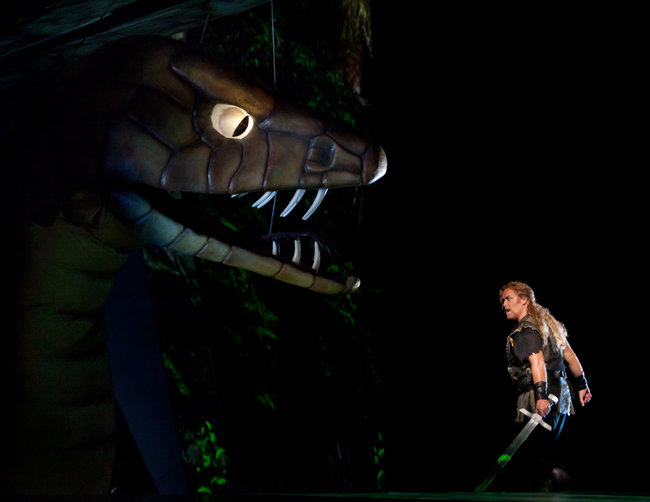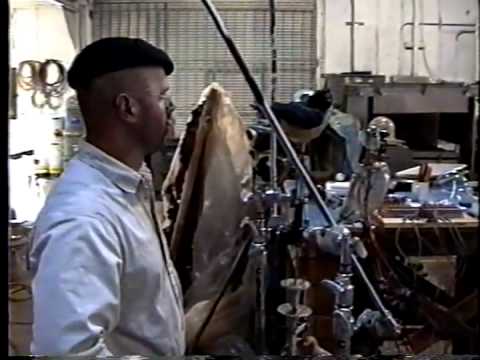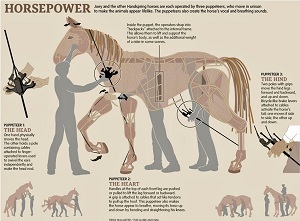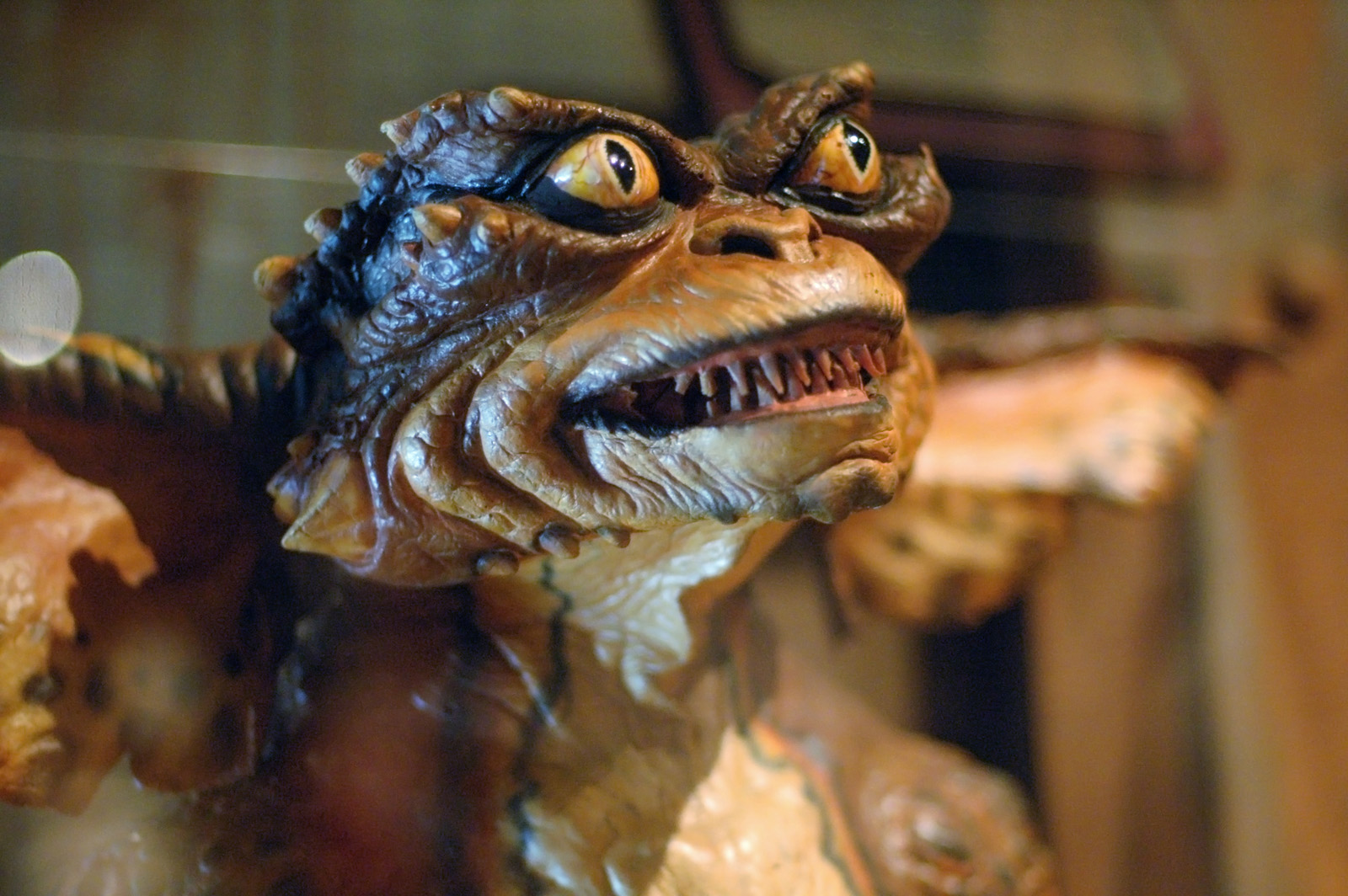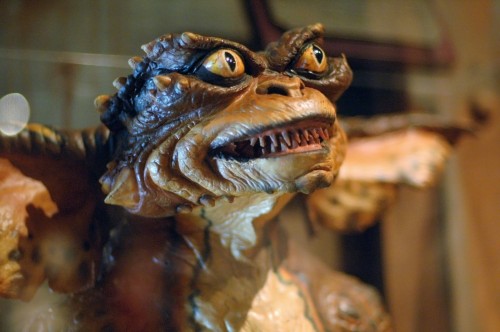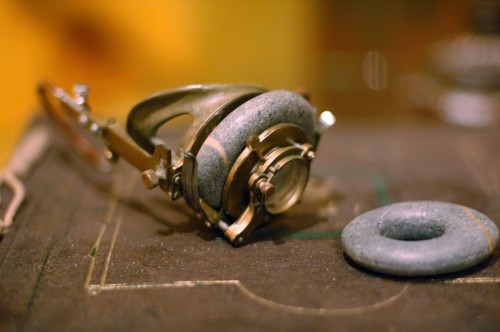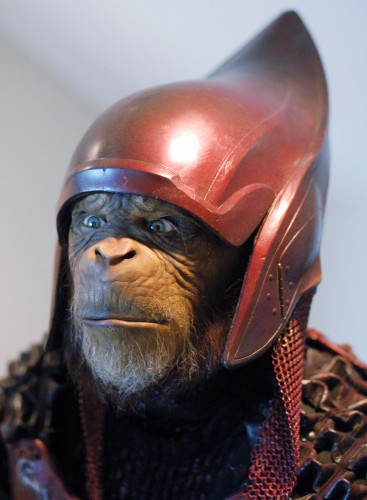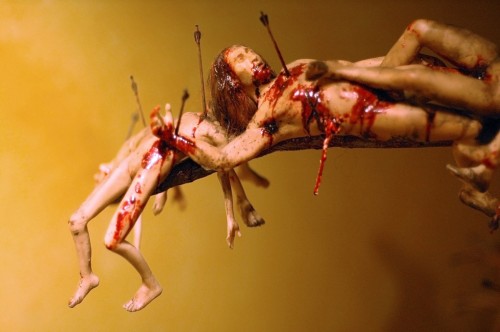The Ring Cycle is perhaps the pinnacle of western opera, and The Metropolitan Opera is one of the preeminent opera companies in the US. I have become interested in one of the major props/machines/creatures in Siegfried, the third opera in the cycle. Our hero, Siegfried, heads to the forest where he meets Fafner, a terrifying dragon with whom he must battle.
As it turns out, I have been able to find information, including pictures, drawings and construction details, about nearly every Fafner ever built at The Met. In previous posts, I have shared information on the Fafners from 1887, 1913 and 1947, as well as the fearsome beast constructed for the operas in 1896 and 1903 (which was rebuilt in 1906).
It appears only three more Fafner dragons have been made for The Met, which is what we will look at next.
1967-1972
A new 1967 production for the Met was designed by Günther Schneider-Siemssen and directed by Wolfgang Weber. Portions of this Ring Cycle were originally presented at the Easter Festival in Salzburg. It was then invited to transfer to the Met, where the set was adapted (and partially recreated) to fit the stage. According to this site, no known audio or video recordings exist of this production. I have included the few renderings and photos that do exist of this scene below, though neither show Fafner himself.
The following image and text comes from this page.
And then he appears as a giant animal, very old and gruesome, his eyes everywhere – a spongy mass, belching fire and steam as he falls on Siegfried’s deadly sword.
(From G. Schneider-Siemssen in conversation with K. Pahlen: Die Bühne, mein Leben, Selke Verlag 1996; (The Stage, My Life – English translation by James Mulder), in press.)
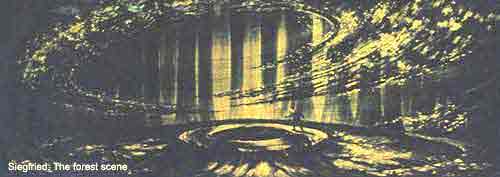
The following photograph is taken from a 1975Â Opera News showing where Fafner is about to appear.
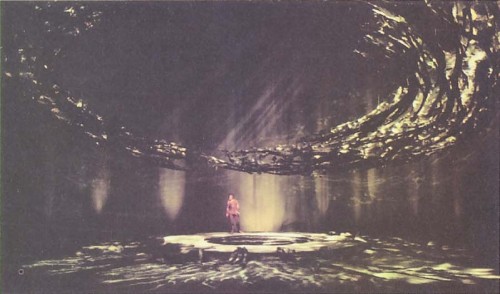
We get one more brief description from a review by Byron Belt in the Newhouse Newspapers, found in the Metropolitan Opera Archive. “The stage business for the battle between Siegfried and Fafner made the dragon into more of a primordial ooze, but we found it most exciting.”
1987
The Met invited Günther Schneider-Siemssen to design the Ring Cycle again in 1986, this time directed by Otto Schenk. This became one of the most successful Ring Cycles produced by the Met in modern times.
A 1988 New York Times article describes the appearance and construction of Schneider-Siemssen’s Fafner:
This thing is growing into a pulsating, gelatinous blob, its four slimy tentacles flailing the air and its one green eye fixed on Siegfried. It’s the Creature From the Black Forest.
Now it’s opening its huge mouth, a great hairy orifice with long, sharp, crooked teeth tinged with red (blood?) and breathing smoke.
Joseph Clark, the Met’s technical director, tells The Times they went with a low-tech solution involving six prop men inside to operate the arms, mouth and eye. This allows the dragon to hear and respond to the music and to Siegfried’s movements.
The Time article continues:
The dragon they built is stretched across a 8-by-12-foot frame and billows out from the floor on a hydraulic piston. Once the dragon is inflated, the six prop men step inside the frame on the stage floor and operate the arms, mouth and eye, all of which are maneuvered by steel rods through universal joints. The rods are attached to a kiddy-car steering wheel and the prop men can guide the arms, extend them, open and close the mouth and eye as they would drive a car in a video game.
Up close, Fafner looks like something put together by a schoolchild for a crafts class. The dragon is covered with a pleated Chinese silk of forest browns and greens, bits of old plastic cups and some goop that resembles candle drippings. The eye is constructed of wire and fiberglass, the teeth are made of foam and the mouth has a fringe around it that, as Mr. Clark put it, ”looks like one of those lampshades one sees in old German hotels.” Old-fashioned dry ice in the mouth makes the smoke.
The article concludes by asking Joseph Clark if Schneider-Siemssen was inspired by anything when designing this version of Fafner. “I do know that between the time we did ‘Die Walkure’ for last season and started to work on ‘Siegfried,'” he said, “he had seen the movie ‘Aliens.'”
In a 1993 New York Times review, Edward Rothstein also notes the similarity to Giger’s Alien creature. He writes:
The arachnidan role, at any rate, seemed reserved for Fafner in the second act, in which the most problems with this traditional production by Otto Schenk also emerged. A ramp circles around a shallow crevice hiding the dragon (whose miked words were intoned by Matti Salminen); with a single eye like a woozy Cyclops, teeth like those of Sigourney Weaver’s “Alien” nemesis and giant limbs like rotting trees, he was difficult to take seriously. Gunther Schneider-Siemssen’s set created an ancient, slightly ruined forest without allowing it to give way to the youthful greenery heard in Wagner’s Forest Murmurs.
The Metropolitan Opera Archives has one of the original renderings for the scene where Fafner is about to appear:
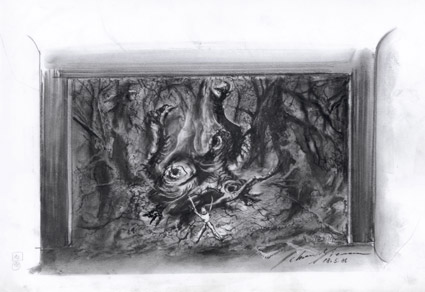
This production was also part of an historic telecast of the entire Ring Cycle by the Met. The scene with Fafner is below.
2011
The Ring Cycle which is currently in repertory at the Opera is the much-talked about production by Robert Lepage. While there is plenty to read about the massive “machine” which was built, and the use of projections, very little is said about the dragon. I am not sure who built it; this production was built by both the Metropolitan Opera’s shop and Lepage’s Ex Machina company, and a whole slew of outside contractors worked on bits and pieces.
We have a photograph provided by the production:
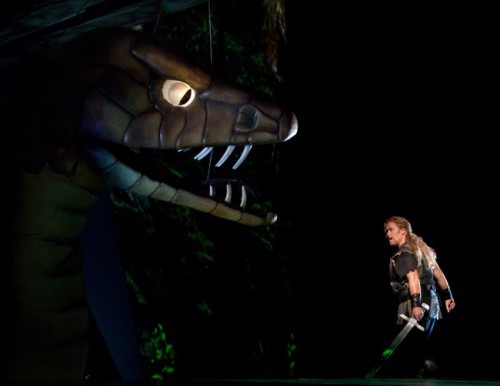
We also have some (fairly scathing) descriptions from reviews of this production. In a New York Times review, Anthony Tommasini says “In his guise as a dragon, the giant Fafner (the formidable bass Hans-Peter König) was a huge, puppetlike thing with scaly skin, spiky teeth and glassy eyes: a little too cute.” In a review for Financial Times, Martin Bernheimer calls it “a silly oversize puppethead”.
So there you have it: every Fafner dragon from every production of Siegfried done by the Metropolitan Opera! I hope you enjoyed it.

